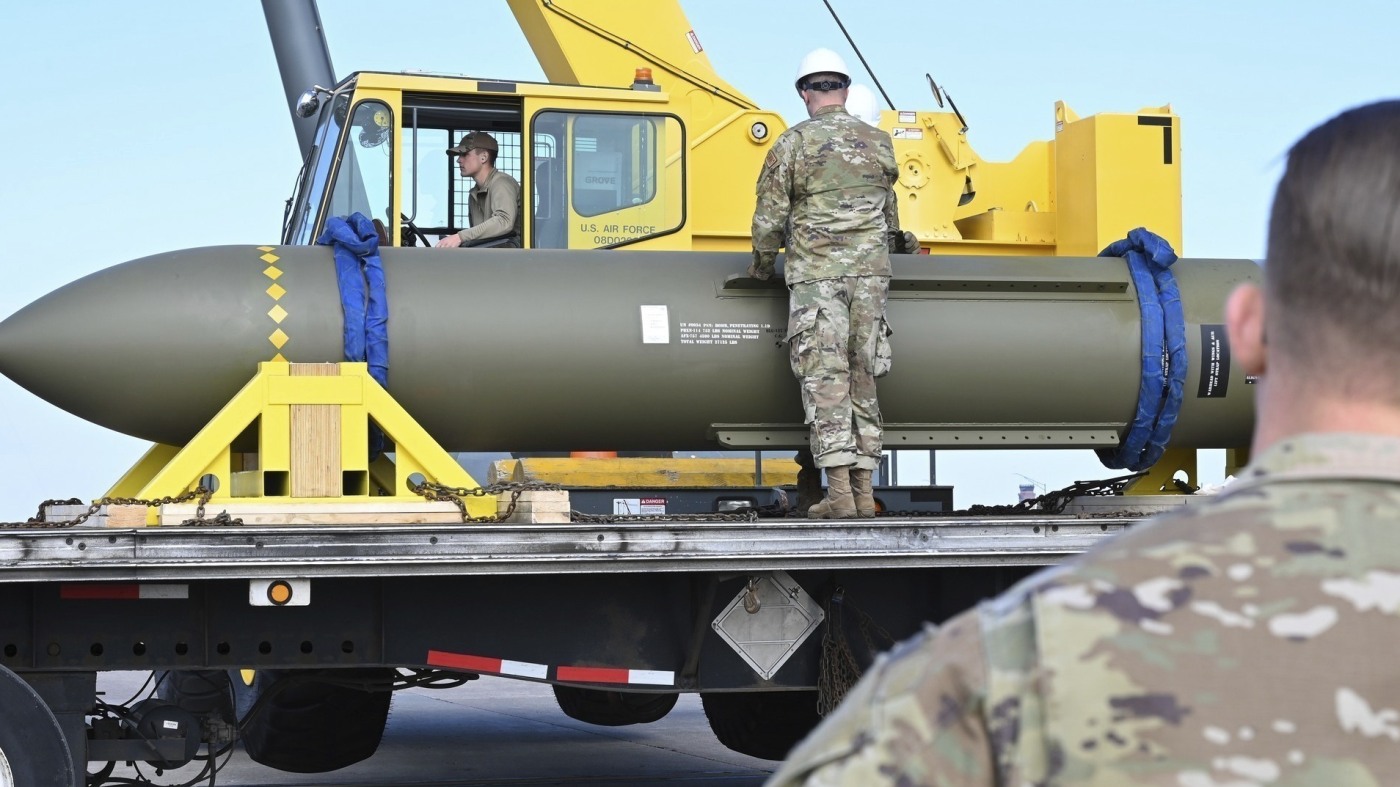The Potential Use of U.S. “Bunker Buster” Bombs Against Iran
The escalating tensions between Israel and Iran, coupled with concerns over Iran’s nuclear program, have brought the possibility of military intervention into sharp focus. Central to discussions surrounding a potential strike is the U.S.’s unique capability to deploy massive “bunker buster” bombs – specifically the GBU-57 – against Iran’s heavily fortified nuclear facilities, most notably the Fordo facility.
The Rise of the “Bunker Buster” in Strategic Discourse
The term “bunker buster” has re-emerged as a key element in geopolitical discussions, driven by the perceived need to neutralize deeply buried nuclear sites. The Fordo facility, constructed within a mountain to protect it from aerial attacks, exemplifies the challenge. Traditional bombs lack the penetration power to effectively damage such targets. This is where the GBU-57, a 30,000-pound bomb, enters the equation. Multiple reports emphasize that the U.S. is the only nation possessing a weapon of this scale and the necessary delivery system – the B-2 Spirit stealth bomber – capable of reaching Fordo. The discussion isn’t merely about possessing the weapon, but the specific context of a potential strike, often framed as supporting a possible Israeli action.
Understanding the GBU-57: Capabilities and Limitations
The GBU-57 Massive Ordnance Penetrator (MOP) is designed to penetrate hardened structures, reaching targets buried deep underground. Its immense weight and dense steel alloy casing allow it to withstand the forces of impact and continue its descent. Reports suggest it can penetrate up to 200 feet of earth and rock before detonating, placing it within range of the centrifuges believed to be housed within the Fordo facility.
However, even this formidable weapon isn’t without limitations. While capable of significant damage, complete destruction of a deeply buried facility is not guaranteed. The effectiveness depends on several factors, including the precise geological composition of the mountain, the facility’s internal layout, and the bomb’s point of impact. Furthermore, the GBU-57 is not the only “bunker buster” in the U.S. arsenal. Smaller, yet still potent, options like the BLU-109 and GBU-28 series could also be employed, offering flexibility depending on the specific target and desired outcome. The GBU-28, notably, was used during the Gulf War to destroy Iraqi command and control bunkers.
Logistical Considerations: The B-2 Stealth Bomber and Payload Capacity
The GBU-57’s deployment is inextricably linked to the B-2 Spirit stealth bomber. This aircraft is crucial not only for its ability to evade radar detection but also for its payload capacity. The B-2 can carry a payload of up to 40,000 pounds, meaning it can theoretically carry two GBU-57s, although operational configurations may vary.
The long-range flight required to reach Iran from potential U.S. bases presents logistical challenges. The mission would necessitate extensive aerial refueling, increasing the risk of detection and interception. Moreover, the decision to deploy the B-2 carries significant political weight, signaling a clear escalation of U.S. involvement. The potential for a direct U.S. strike, even with a “bunker buster,” is described as carrying “a lot of political baggage.”
The Fordo Facility: A Target Analysis
The Fordo Fuel Enrichment Plant is the primary focus of this discussion. Its location deep within a mountain provides substantial protection against conventional attacks. The facility is believed to house a significant portion of Iran’s uranium enrichment program, making it a critical target for those seeking to prevent Iran from developing nuclear weapons.
However, even a successful strike against Fordo wouldn’t necessarily eliminate Iran’s nuclear capabilities entirely. Iran has other nuclear sites, some of which are less well-protected but more dispersed. Furthermore, the destruction of Fordo could trigger a retaliatory response from Iran, potentially escalating the conflict and destabilizing the region.
Ramifications and Wider Regional Impact
The use of a “bunker buster” bomb against Iran would have far-reaching consequences. Beyond the immediate military impact, it would likely trigger a cascade of events with unpredictable outcomes.
- Escalation: A U.S. strike could provoke a direct Iranian response, potentially targeting U.S. assets in the region, including military bases and naval vessels.
- Regional Instability: The conflict could spill over into neighboring countries, drawing in other regional actors and exacerbating existing tensions.
- Oil Market Disruption: The Persian Gulf is a critical artery for global oil supplies. A conflict in the region could disrupt oil flows, leading to a sharp increase in prices and potentially triggering a global economic downturn.
- Political Fallout: The decision to use force would likely face international condemnation and could damage the U.S.’s standing in the world.
The debate surrounding the “bunker buster” isn’t solely a military one; it’s deeply intertwined with political and economic considerations. Analysts emphasize that the bomb is not the only way to address Iran’s nuclear program, highlighting the need for continued diplomatic efforts and alternative strategies.
A Calculated Risk with Uncertain Outcomes
The potential deployment of a U.S. “bunker buster” bomb against Iran represents a high-stakes gamble. While the GBU-57 offers a unique capability to penetrate deeply buried targets like Fordo, its effectiveness is not guaranteed, and the broader ramifications of its use are potentially catastrophic. The decision rests on a complex calculation of risks and benefits, weighing the potential to delay or disrupt Iran’s nuclear program against the likelihood of escalating a regional conflict with unpredictable and potentially devastating consequences. The situation demands careful consideration, strategic foresight, and a clear understanding of the multifaceted challenges involved.








